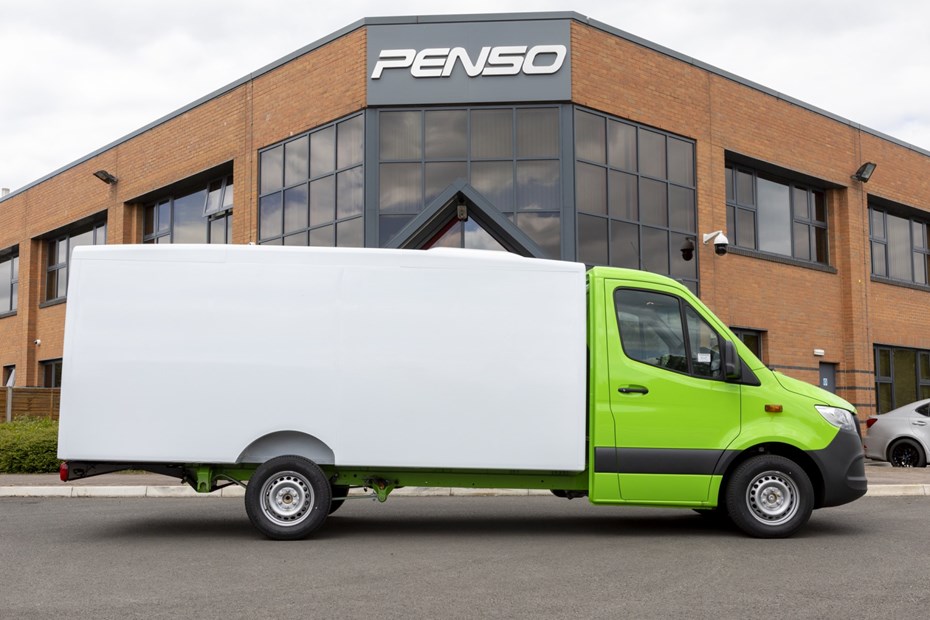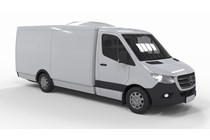With the majority of the country on strict orders to stay home whenever possible, it’s not surprising that grocery delivery services are proving incredibly popular.
Perhaps that’s why Coventry-based Penso has chosen now to reveal its latest high-tech innovation – an ultra-lightweight van body for 3.5-tonne delivery vehicles.
The innovative part? It’s made from carbonfibre and recycled plastic bottles, bringing huge weight savings and promising to improve fuel consumption.
Penso Blue Ocean delivery van body pods
Built on a new robotised production line at the firm’s Coventry factory, the ‘Blue Ocean’ delivery pods are made from a blend of carbonfibre and recycled plastic and claim to be able to boost payload by up to 50% compared to existing aluminium or fibreglass bodies.
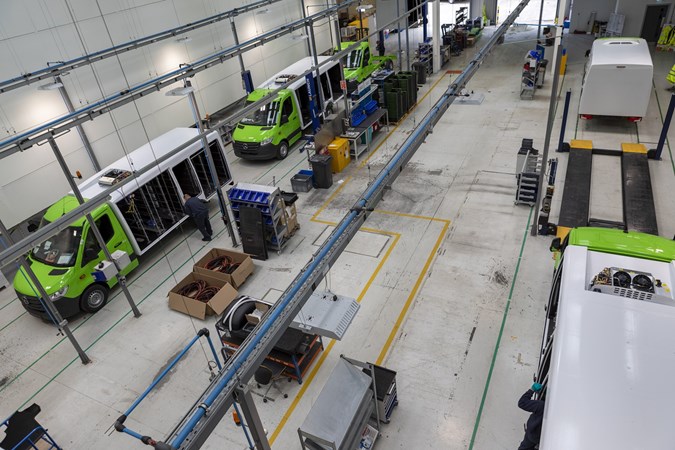
Penso’s not exactly a well-known name but it’s got quite an interesting – and varied – portfolio under its belt.
It builds Mercedes-Benz Vito taxis for London, doors for tube carriages on certain London Underground lines, as well as prototype body panels and mechanisms for the Spyker C8 Aileron Spyder – a bespoke premium sports car.
What’s so special about these pods?
It’s all in the construction – they’re made of composite materials including carbonfibre, known for its lightness and extreme strength. There’s a reason many of the world’s most exotic and powerful supercars (not to mention F1 racing cars) use carbonfibre extensively in their construction.
Earlier carbonfibre production methods were time and cost-intensive, but by press-forming panels using heated dies, Penso’s bought production time down from more than three hours to just 10 minutes.
The main advantage, however, is a reduction in weight. Penso reckons that its refrigerated pods for grocery delivery are around 400kg lighter than competitors, bringing with them an increase in payload of up to 50% and a big improvement in fuel consumption when unladen.
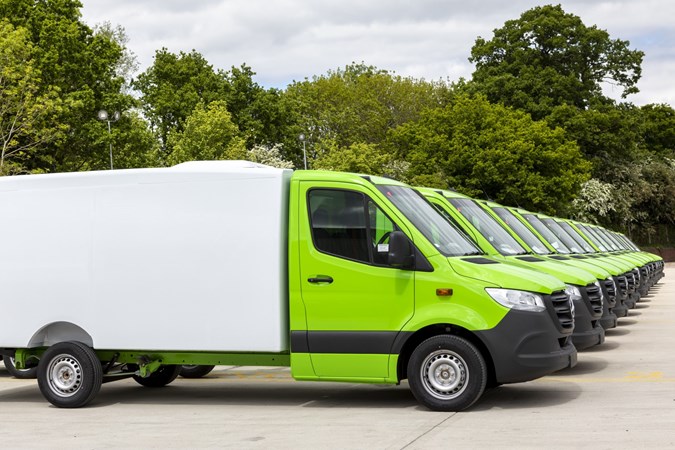
There are other clever design touches, too. By basing their initial units on front-wheel drive version of the Mercedes-Benz Sprinter when most traditional rivals use rear-wheel drive models,Penso’s been able to lower the floor – and, by extension, the roofline.
This allows even the top storage racks to be accessed by anyone from around 5ft 4in tall without the need for steps, saving time and reducing the risk of injury from overstretching.
Better yet, the lowered roofline now sits almost flush with the cab roof, which helps aerodynamics and further aids fuel economy.
Do all these innovations add up to a cost saving?
Well, the pods aren’t out in force yet, so any numbers so far are based on Penso’s own testing. However, it claims that during testing it achieved an average fuel economy of 34.05mpg, compared with 24mpg for a rival refrigerator unit on the same route.
That alone could equate to a saving of up to £2,400 per vehicle per year in diesel costs.
The increased payload will also save money – with 1,250kg of payload on offer compared to an average of 850kg for competitors, routes that previously demanded three trips can now be made in just two. That could mean more deliveries or fewer drivers required, and even further fuel savings.
Penso reckons the pods have a ten-year lifespan (backing that up with a ten-year structural warranty), and they can be easily migrated to a new vehicle once the underlying van has reached the end of its life.
Carbonfibre isn’t known for being the easiest thing to repair, but the company says that minor dings and dents can be fixed by any competent body shop, and panels can be replaced individually if larger damage is accumulated.
But what’s the cost of a Penso Blue Ocean carbonfibre van body?
Ah. That’s a potential sticking point. We say ‘potential’ because Penso wouldn’t tell us how much the units cost. They could in theory be cheaper than existing products… but that’s very optimistic.
Given carbonfibre is typically ten times the price of aluminium and 2.5 times the price of fibreglass, even with the reduced volume required due to its strength the Penso bodies will likely be more expensive to purchase than competitors.
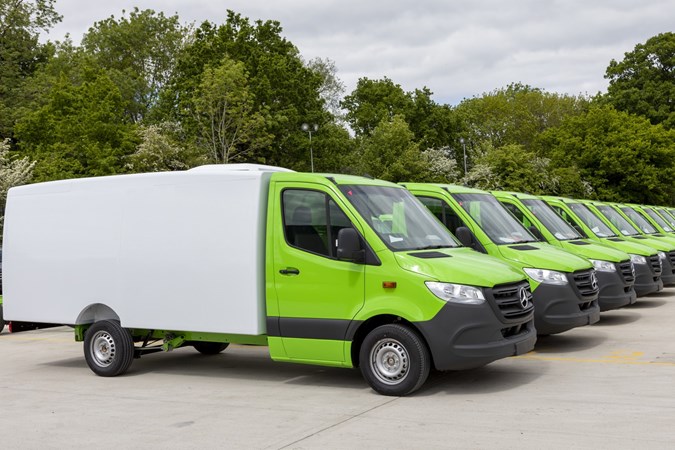
Penso did say that over the lifetime, operators could expect cost savings of up to £6,700 per vehicle, and that finance costs would be ‘comparative’ to competitors. We’ll hopefully find out some more concrete figures before too long.
Any other advantages?
Basing the first round of pods on a Mercedes Sprinter is undeniably a good thing. It’s one of our very favourite large vans and the existing diesel versions will be joined by an electric model before long, which Penso’s pods are fully compatible with.
The pods are also built from recycled materials – 5,000 plastic bottles go into the structural cores of each one, hence the ‘Blue Ocean’ name referring to ocean plastic waste. Penso claims 95% of it can be recycled again at the end-of-life.
We’ll see more of Penso’s delivery pods in coming weeks, as its first units have shipped to customers and will be on the roads very soon.
Also read:
>> Mercedes-Benz van conversions and the Sprinter Bodybuilding division
>> The Parkers guide to electric vans
>> Our full Mercedes-Benz Sprinter review
>> Sign up for the Parkers Vans and Pickups newsletter
Just so you know, we may receive a commission or other compensation from the links on this website - read why you should trust us.


